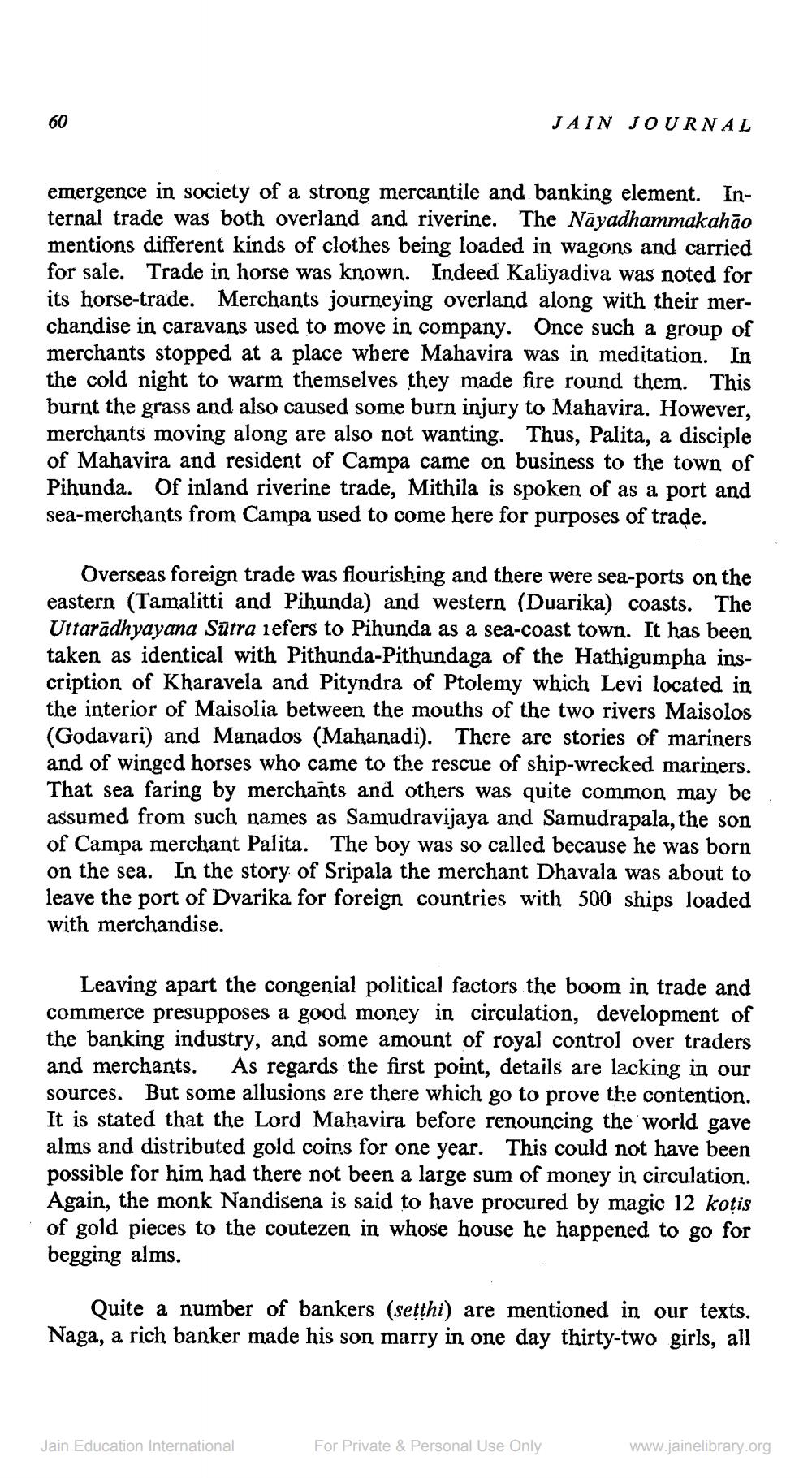________________
60
emergence in society of a strong mercantile and banking element. Internal trade was both overland and riverine. The Nayadhammakahão mentions different kinds of clothes being loaded in wagons and carried for sale. Trade in horse was known. Indeed Kaliyadiva was noted for its horse-trade. Merchants journeying overland along with their merchandise in caravans used to move in company. Once such a group of merchants stopped at a place where Mahavira was in meditation. In the cold night to warm themselves they made fire round them. This burnt the grass and also caused some burn injury to Mahavira. However, merchants moving along are also not wanting. Thus, Palita, a disciple of Mahavira and resident of Campa came on business to the town of Pihunda. Of inland riverine trade, Mithila is spoken of as a port and sea-merchants from Campa used to come here for purposes of trade.
JAIN JOURNAL
Overseas foreign trade was flourishing and there were sea-ports on the eastern (Tamalitti and Pihunda) and western (Duarika) coasts. The Uttaradhyayana Sutra 1efers to Pihunda as a sea-coast town. It has been taken as identical with Pithunda-Pithundaga of the Hathigumpha inscription of Kharavela and Pityndra of Ptolemy which Levi located in the interior of Maisolia between the mouths of the two rivers Maisolos (Godavari) and Manados (Mahanadi). There are stories of mariners and of winged horses who came to the rescue of ship-wrecked mariners. That sea faring by merchants and others was quite common may be assumed from such names as Samudravijaya and Samudrapala, the son of Campa merchant Palita. The boy was so called because he was born on the sea. In the story of Sripala the merchant Dhavala was about to leave the port of Dvarika for foreign countries with 500 ships loaded with merchandise.
Leaving apart the congenial political factors the boom in trade and commerce presupposes a good money in circulation, development of the banking industry, and some amount of royal control over traders and merchants. As regards the first point, details are lacking in our sources. But some allusions are there which go to prove the contention. It is stated that the Lord Mahavira before renouncing the world gave alms and distributed gold coins for one year. This could not have been possible for him had there not been a large sum of money in circulation. Again, the monk Nandisena is said to have procured by magic 12 kotis of gold pieces to the coutezen in whose house he happened to go for begging alms.
Quite a number of bankers (seṭṭhi) are mentioned in our texts. Naga, a rich banker made his son marry in one day thirty-two girls, all
Jain Education International
For Private & Personal Use Only
www.jainelibrary.org




